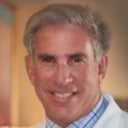Posted underBreast Fat Transfer q&a
Would 250ccs of fat enough to increase an empty 36B breasts size by 1 cup size? If not, how much at least would I need? (Photo)
Considering a fat transfer to breast surgery. I consulted with four doctors in Germany where I live. They told me that they could only be able to put in 250cc of fat in each breast (One doctor didn't even examine me before telling me that. I am not convinced that 250 cc is enough to make any difference to my breasts. I have breast tissue/surface since I breastfed two children. I have plenty of extra fat. I understand that my breast is dropped but I don't mind it as long as there is volume.
Answers (6)
From board-certified doctors and trusted medical professionals
More Breast Fat Transfer Questions
See all Breast Fat Transfer Q&AWE SEND PRETTY
EMAILS
What’s trending? Who’s turning heads? Which TikTok myths need busting? We’ve got you. No fluff, no gatekeeping—just real talk. Get our free, unfiltered newsletter.




